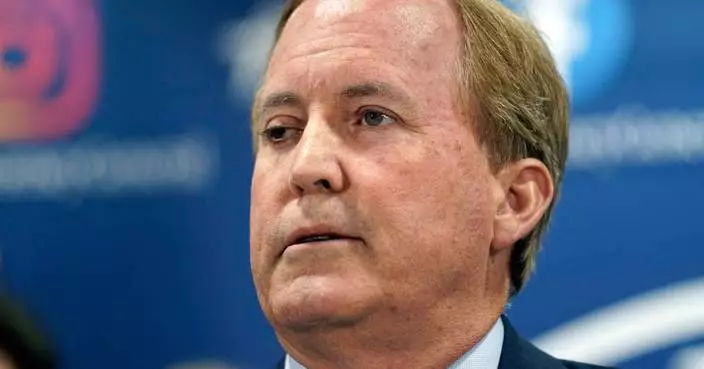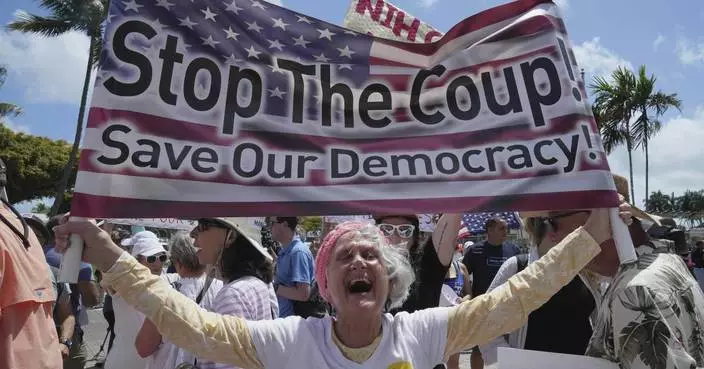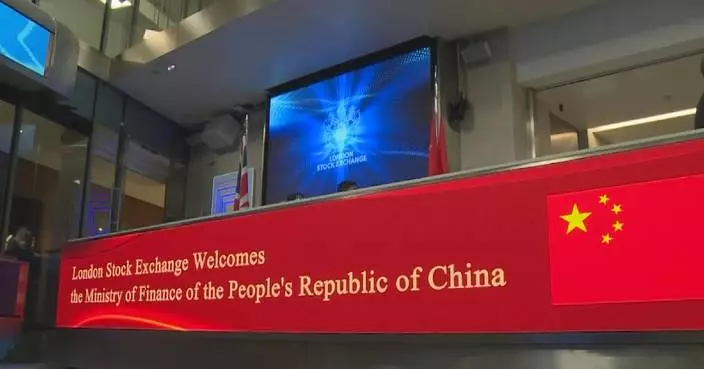RALEIGH, N.C. (AP) — Robert F. Kennedy Jr. can remain on North Carolina's presidential ballots after a state judge on Monday refused to block printing his name and those of other candidates of the “We the People” party that was recently certified by the State Board of Elections.
Wake County Superior Court Judge Keith Gregory rejected the preliminary injunction request by the North Carolina Democratic Party, which challenged the board's decision last month that declared We the People an official party.
Separately late Monday, a federal judge halted the board's rejection of official party status for another political group — Justice for All — that collected signatures to put progressive activist and professor Cornel West on the presidential ballot. U.S. District Judge Terrence Boyle told the board to declare Justice for All of North Carolina an official party and to accept its candidates for the fall ballot.
The board had voted 4-1 to recognize We the People, which has been used by Kennedy's supporters to get the environmentalist and author on the ballot in a handful of states. Kennedy otherwise promotes himself nationally as an independent. The decision came as a New York judge ruled against Kennedy ’s inclusion on the ballot there, saying he’s a California resident.
Board staff last found We The People organizers turned in enough valid signatures from registered and qualified voters to exceed the petition threshold in state law, which is currently 13,865. Petition collectors also must inform the signers of the general purpose and intent of the proposed party.
Lawyers for We the People and the state said the board granted the certification properly, in keeping with rules approved by the General Assembly.
“You simply asked this court to look at the law and you said the state board didn’t violate it," Gregory told state attorney Terence Steed at the close of the nearly two-hour hearing. “I agree.”
The state Democratic Party filed a complaint seeking the board's decision be reversed. It accused Kennedy's campaign of using the We the People vehicle to evade the tougher standard that state law sets for independent candidates to get on the ballot — the collection of six times as many signatures.
Two of the board's Democrats joined the two Republicans in giving We the People official party status on July 16. But even one of those two Democrats — Chair Alan Hirsch — said at the time the We The People effort was "a subterfuge” and suggested the matter was ripe for a legal challenge.
Ray Bennett, a lawyer representing the Democrats in the lawsuit, pointed in court to We the People petition instructions stating the party's purpose was simply to create a new party to put Kennedy on the ballot. That's impermissible, Bennett said, and it would otherwise prompt all independent candidates to favor the easier political party signature process.
But Steed and Oliver Hall, a lawyer representing We the People, said the certification law contains no test that the election board must use to decide whether a new party's purpose is acceptable — rather, it simply must have one.
Hall also said removing We the People from the ballot would be an extraordinary action that violates voters' First Amendment rights.
A state Democratic Party spokesperson didn't respond Monday to an email seeking comment on Gregory's decision, which the judge planned to issue in writing later and could be appealed.
The Democratic lawyers had asked that Gregory act by the end of the week. State election officials have said that's when they needed all candidate names for fall ballot printing.
Democrats are worried Kennedy still has enough left-wing star appeal that he could peel off voters from their presidential nominee, who was expected to be President Joe Biden until he dropped his reelection bid last month. Vice President Kamala Harris has since won the nomination.
The Justice for All litigation stemmed from the board's Democratic majority voting 3-2 to reject the group's petition for official party status.
Board staff said it had received more than 17,000 signatures for Justice for All. But Democratic board members questioned how most of the signatures turned in were collected, including those sought by an outside organization called People Over Party. Board staff said dozens of voters whose names were on that list of signatures said they didn’t sign the petition or didn’t know what it was for. And the board said potentially fraudulent signatures were being investigated.
Boyle ruled the board went too far in throwing out the entire petition request. He said People Over Party submitted documents showing how it complied with the petition law. As for allegations of fraud, the board could have simply removed the signatures from counties where many reports originated, subtracting them from the total.
“The Board effectively disenfranchised over 17,000 North Carolina voters who signed petitions to certify JFA as a new political party on flawed, highly suspect grounds,” Boyle wrote while declaring the plaintiffs were likely to win in court on their First Amendment claims. Boyle's ruling can also be appealed.
Justice for All of North Carolina co-chair Italo Medelius praised Boyle's decision, saying Tuesday that it's "not just a win for JFA but a victory for every North Carolinian who believes in the power of choice and the strength of democracy.”
Kennedy’s campaign has said he is officially on the ballot in 17 states and signatures have been submitted in 23 more. The West campaign said Tuesday it has enough signatures and party nominations needed to get on the ballot in 16 states.
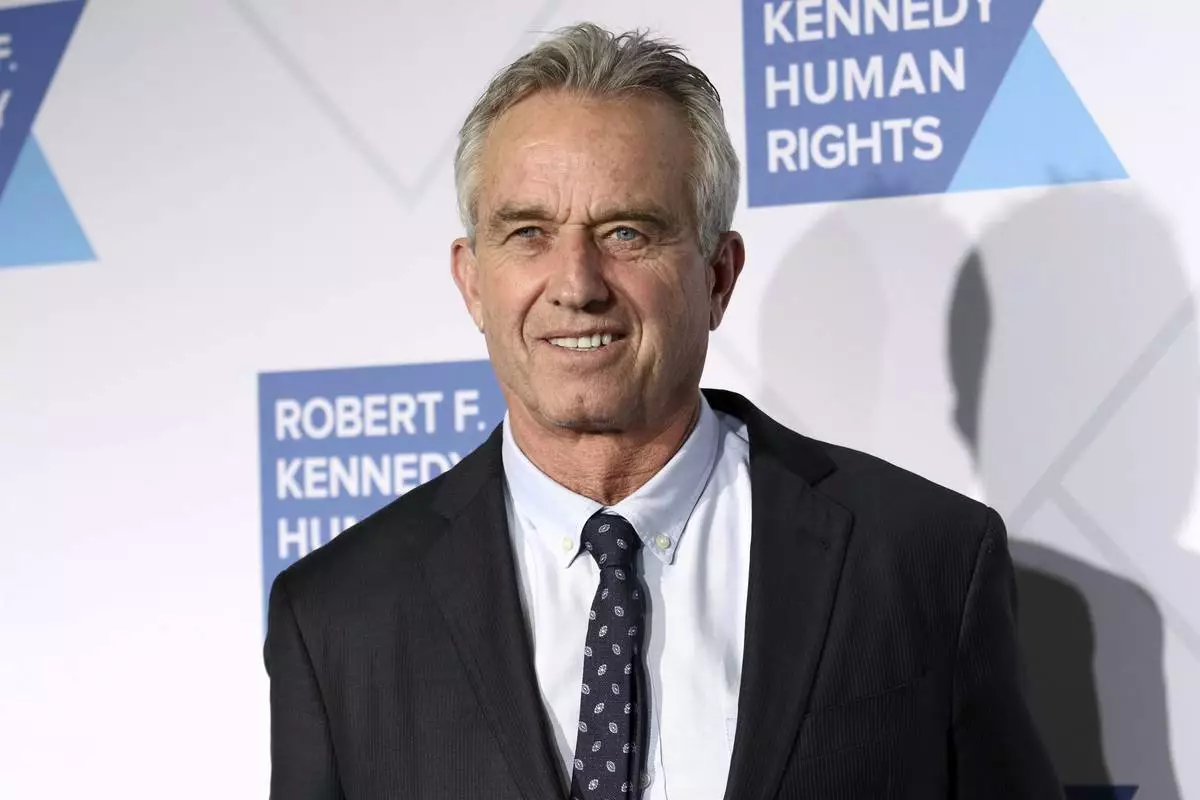
FILE - In this Dec. 12, 2019 file photo, Robert F. Kennedy, Jr. attends the 2019 Robert F. Kennedy Human Rights Ripple of Hope Awards at the New York Hilton Midtown in New York. (Photo by Greg Allen/Invision/AP, File)

A small group of supporters wait for Independent presidential candidate Robert F. Kennedy Jr., to arrive at the Albany County Courthouse, Wednesday, Aug. 7, 2024, in Albany, N.Y. (AP Photo/Hans Pennink)
Opponents of President Donald Trump and billionaire Elon Musk rallied across the U.S. on Saturday to protest the administration's actions on government downsizing, the economy, human rights and other issues.
More than 1,200 “Hands Off!” demonstrations were planned by more than 150 groups, including civil rights organizations, labor unions, LBGTQ+ advocates, veterans and elections activists. The protest sites included the National Mall in Washington, D.C., state capitols and other locations in all 50 states.
Protesters assailed the Trump administration's moves to fire thousands of federal workers, close Social Security Administration field offices, effectively shutter entire agencies, deport immigrants, scale back protections for transgender people and cut federal funding for health programs.
Musk, a Trump adviser who owns Tesla, SpaceX and the social media platform X, has played a key role in government downsizing as the head of the newly created Department of Government Efficiency. He says he is saving taxpayers billions of dollars.
Kelley Robinson, president of the Human Rights Campaign advocacy group, spoke at the Washington protest, criticizing the Trump administration's treatment of the LBGTQ+ community.
“The attacks that we’re seeing, they’re not just political. They are personal, y’all,” she said. “They’re trying to ban our books, they’re slashing HIV prevention funding, they’re criminalizing our doctors, our teachers, our families and our lives. This is Donald Trump’s America and I don’t want it y’all. We don’t want this America, y’all. We want the America we deserve, where dignity, safety and freedom belong not to some of us, but to all of us.”
Thousands of people marched in New York City's midtown Manhattan. In Massachusetts thousands more gathered on Boston Common holding signs including “Hands off our democracy,” “Hands off our Social Security” and “Diversity equity inclusion makes America strong. Hands off!”
In Ohio, hundreds rallied in the rain at the Statehouse in Columbus.
Roger Broom, 66, a retiree from Delaware County, Ohio, said at the Columbus rally that he used to be a Reagan Republican but has been turned off by Trump.
“He’s tearing this country apart,” Broom said. “It’s just an administration of grievances.”
Hundreds of people also demonstrated in Palm Beach Gardens, Florida, a few miles from Trump's golf course in Jupiter, where he spent the morning at the club's Senior Club Championship. People lined both sides of PGA Drive, encouraging cars to honk and chanting slogans against Trump.
Archer Moran from Port St. Lucie, Florida, said, “They need to keep their hands off of our Social Security."
“The list of what they need to keep their hands off of is too long,” Moran said. “And it's amazing how soon these protests are happening since he’s taken office.”
The president plans to go golfing again Sunday, according to the White House.
Asked about the protests, the White House said in a statement that “President Trump’s position is clear: he will always protect Social Security, Medicare, and Medicaid for eligible beneficiaries. Meanwhile, the Democrats’ stance is giving Social Security, Medicaid, and Medicare benefits to illegal aliens, which will bankrupt these programs and crush American seniors.”
Activists have staged nationwide demonstrations against Trump or Musk multiple times since Trump returned to office. But the opposition movement has yet to produce a mass mobilization like the Women's March in 2017, which brought thousands of women to Washington, D.C., after Trump's first inauguration, or the Black Lives Matter demonstrations that erupted in multiple cities after George Floyd's killing in 2020.
In Charlotte, North Carolina, protesters said they were supporting a variety of causes, from Social Security and education to immigration and women's reproductive rights.
“Regardless of your party, regardless of who you voted for, what’s going on today, what’s happening today is abhorrent,” said Britt Castillo, 35, of Charlotte. "It’s disgusting and as broken as our current system might be, the way that the current administration is going about trying to fix things — it is not the way to do it. They’re not listening to the people."
“All they’re doing is making sure that they have a parachute for them and their rich friends, and everybody else here that lives here — that makes the gears turn for this country — are just screwed at the end of the day,” she said.
Associated Press writers Julie Carr Smyth in Columbus, Ohio, and Fatima Hussein in West Palm Beach, Florida, and video journalist Guillermo Gonzalez in Charlotte, North Carolina, contributed to this report.
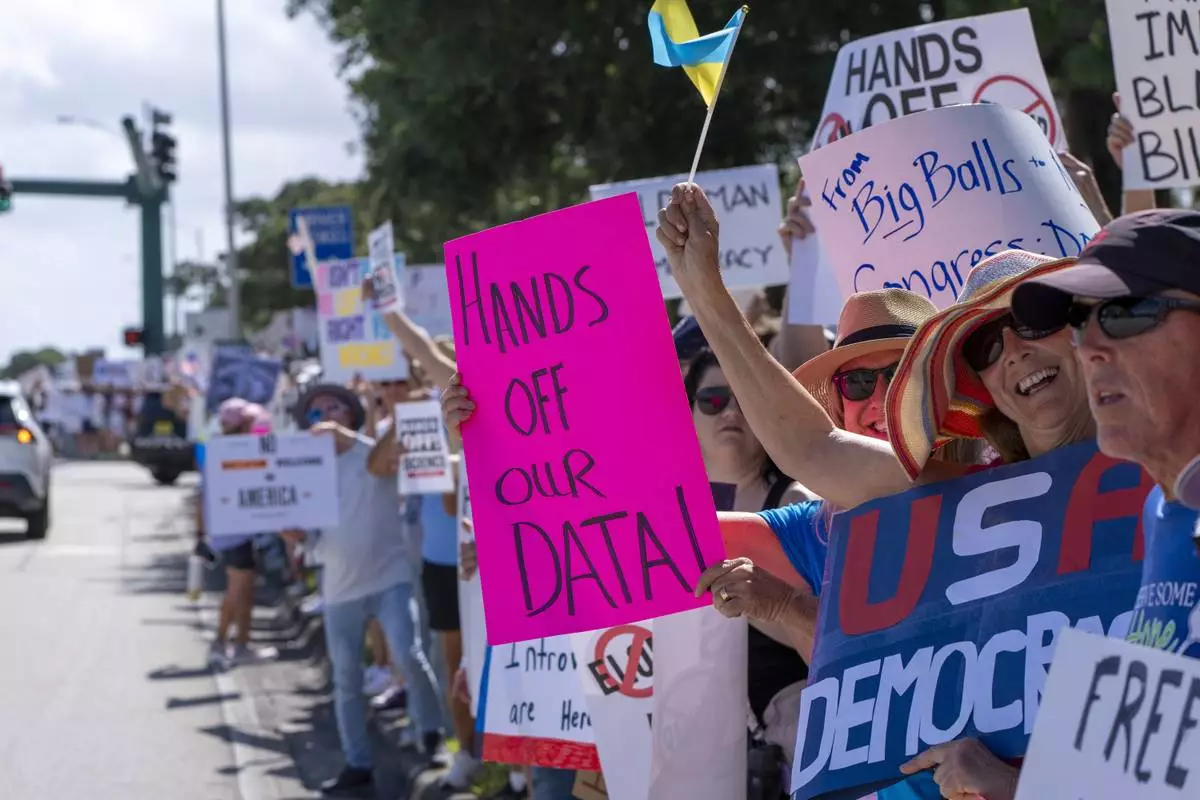
Activists protest President Donald Trump, who was a few miles away at his Trump National Golf Club, during a "Hands Off!" demonstration Saturday, April 5, 2025, in Palm Beach Gardens, Fla. (AP Photo/Alex Brandon)
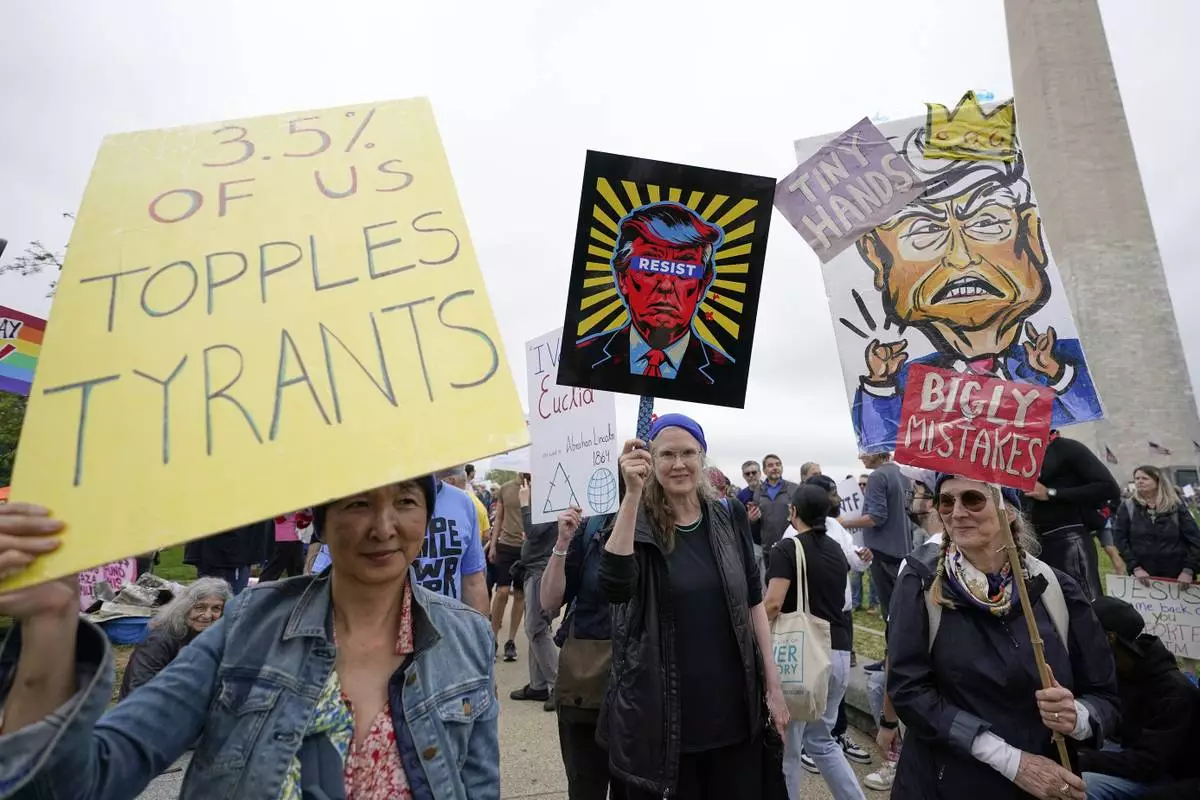
Demonstrators hold up signs during a "Hands Off!" protest against President Donald Trump at the Washington Monument in Washington, Saturday, April 5, 2025. (AP Photo/Jose Luis Magana)
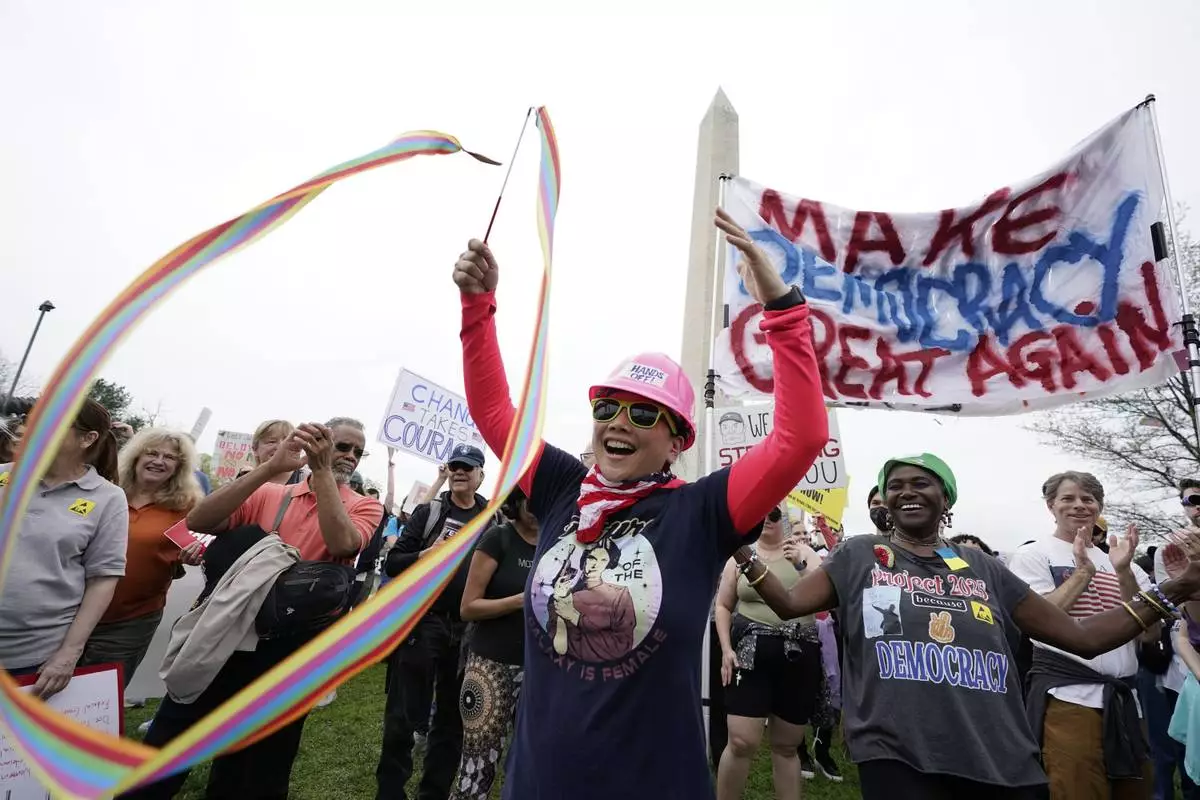
A demonstrator twirls a ribbon during a "Hands Off!" protest against President Donald Trump at the Washington Monument in Washington, Saturday, April 5, 2025. (AP Photo/Jose Luis Magana)

Pro-Palestinian protesters carrying a depiction of President Donald Trump gather at a rally before marching toward the U.S. Immigration and Customs Enforcement (ICE) headquarters, Saturday, April 5, 2025, in Washington. (AP Photo/Manuel Balce Ceneta)
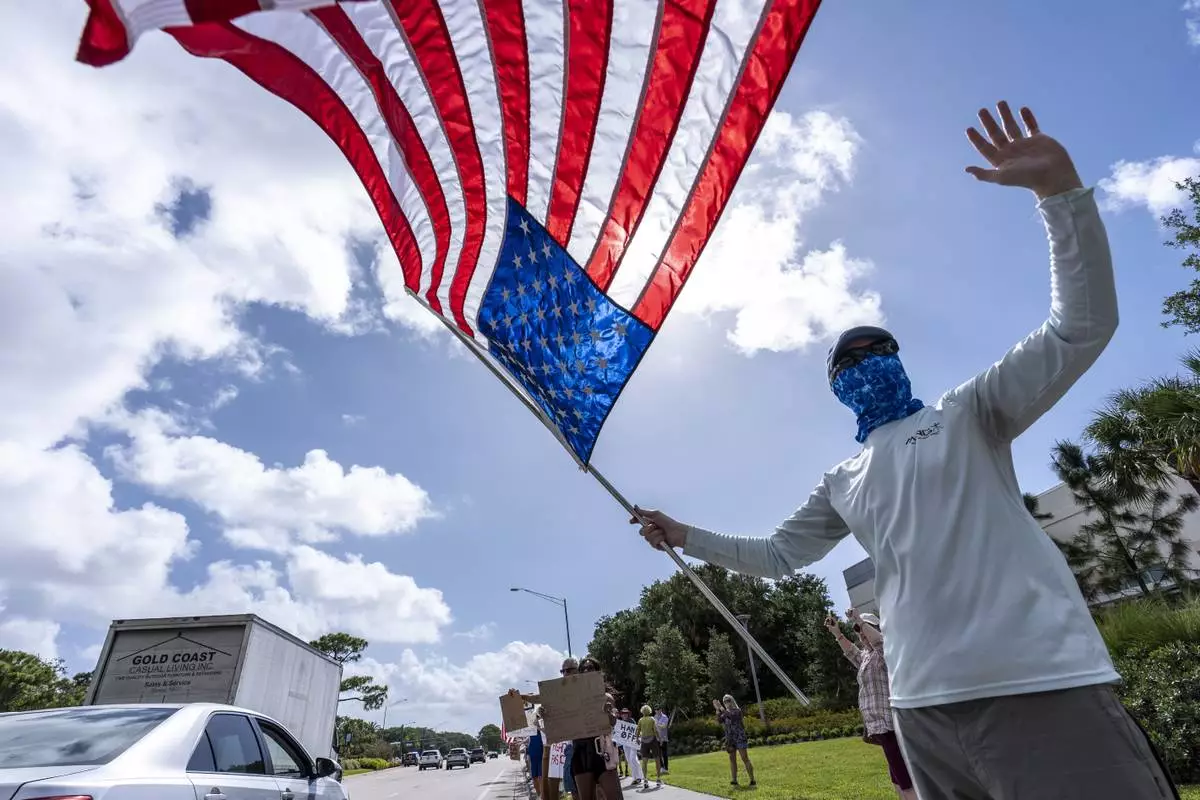
Activists protest President Donald Trump, who was a few miles away at his Trump National Golf Club, during a "Hands Off!" demonstration Saturday, April 5, 2025, in Palm Beach Gardens, Fla. (AP Photo/Alex Brandon)
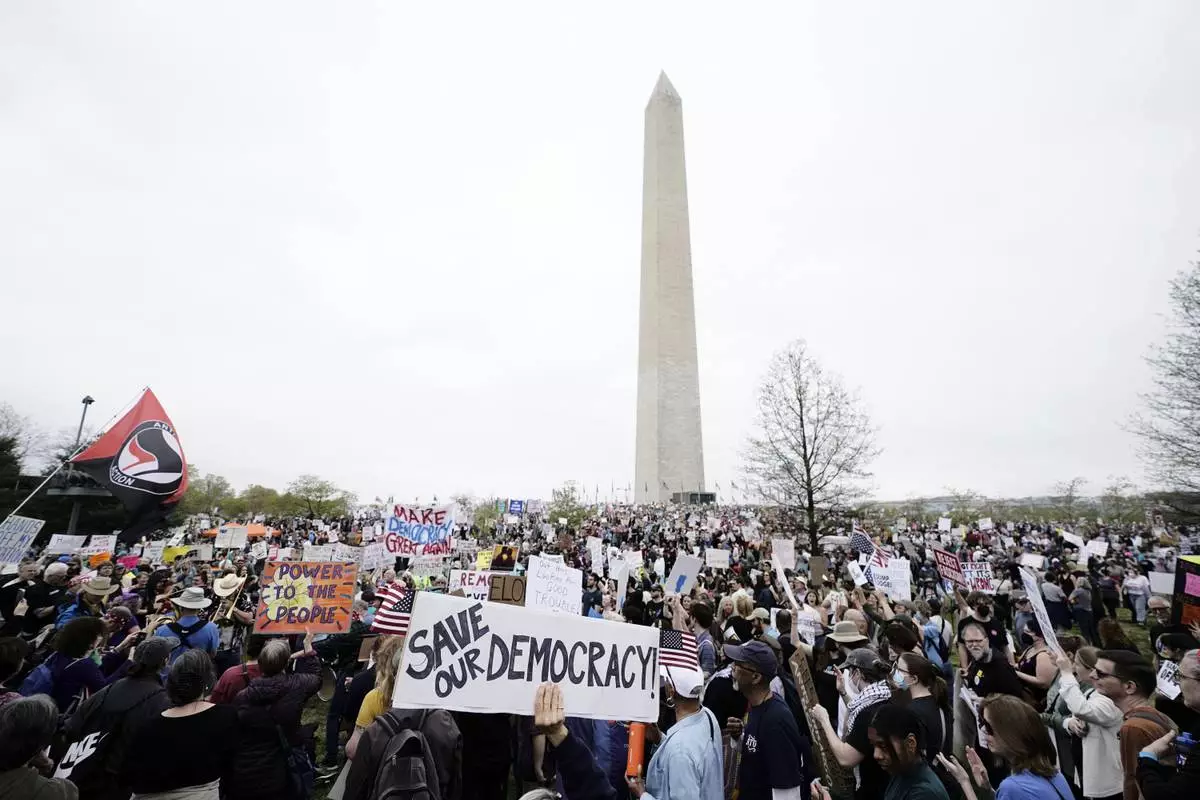
Demonstrators hold up signs during a "Hands Off!" protest against President Donald Trump at the Washington Monument in Washington, Saturday, April 5, 2025. (AP Photo/Jose Luis Magana)
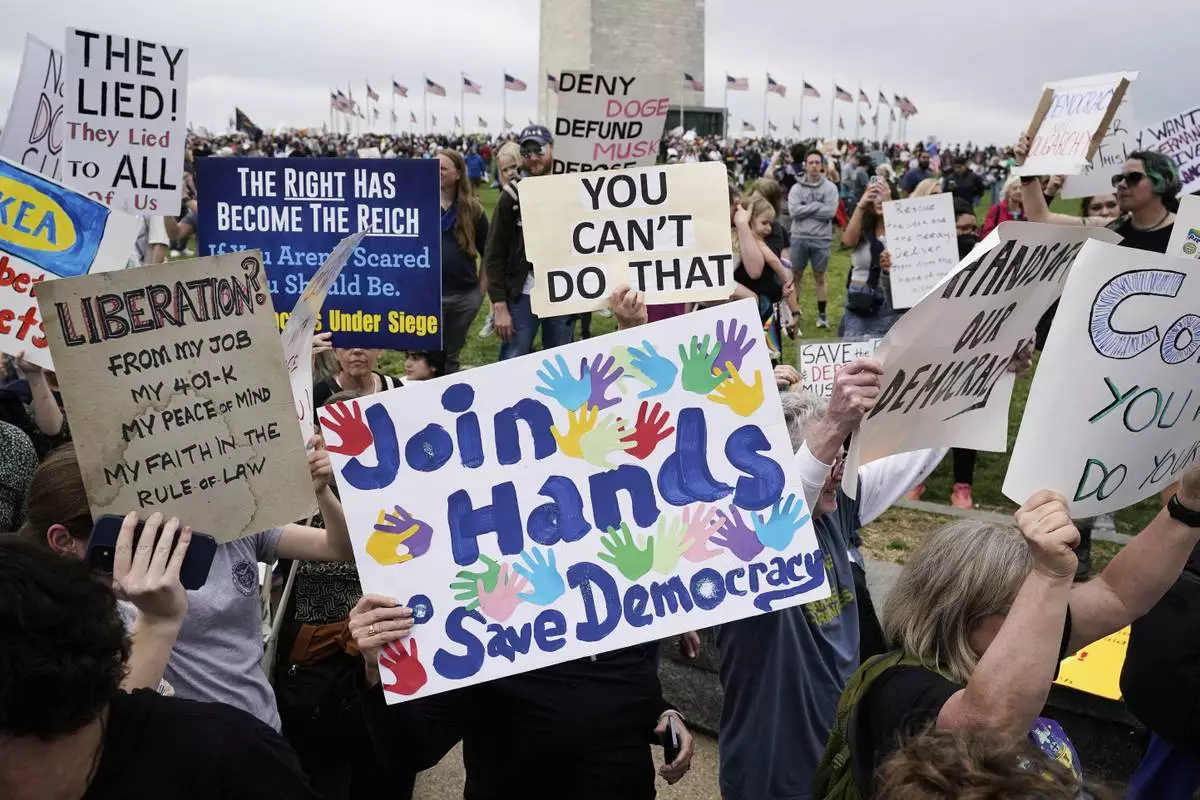
Demonstrators hold up signs during a "Hands Off!" protest against President Donald Trump at the Washington Monument in Washington, Saturday, April 5, 2025. (AP Photo/Jose Luis Magana)

Civil rights demonstrators hold signs and speak to passing vehicles, Saturday, April 5, 2025, in Rome, Ga. (AP Photo/Mike Stewart)
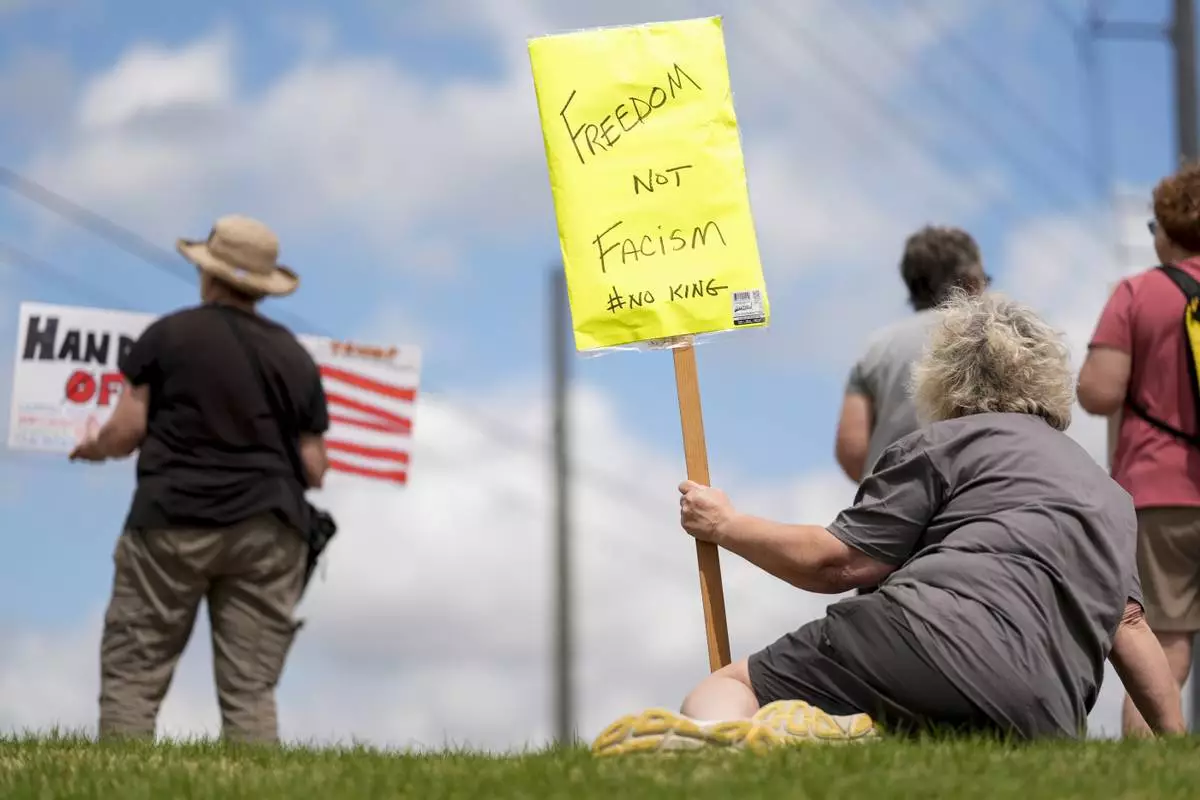
Beth Maddox, of Calhoun, Ga., right, participates in a civil rights demonstrators, Saturday, April 5, 2025, in Rome, Ga. (AP Photo/Mike Stewart)
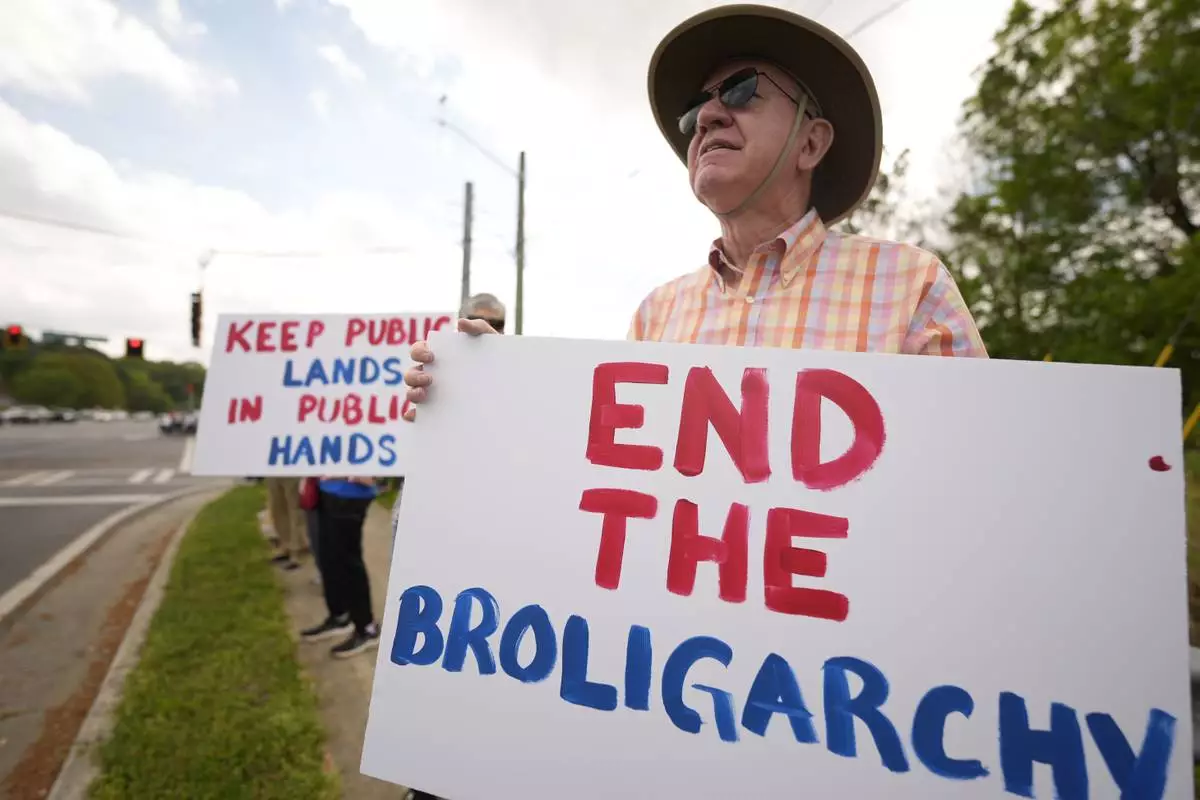
Greg McCollum, of Rome, Ga., participates in a civil rights demonstrators, Saturday, April 5, 2025, in Rome, Ga. (AP Photo/Mike Stewart)

A U.S. flag flies during a civil rights demonstration, Saturday, April 5, 2025, in Rome, Ga. (AP Photo/Mike Stewart)
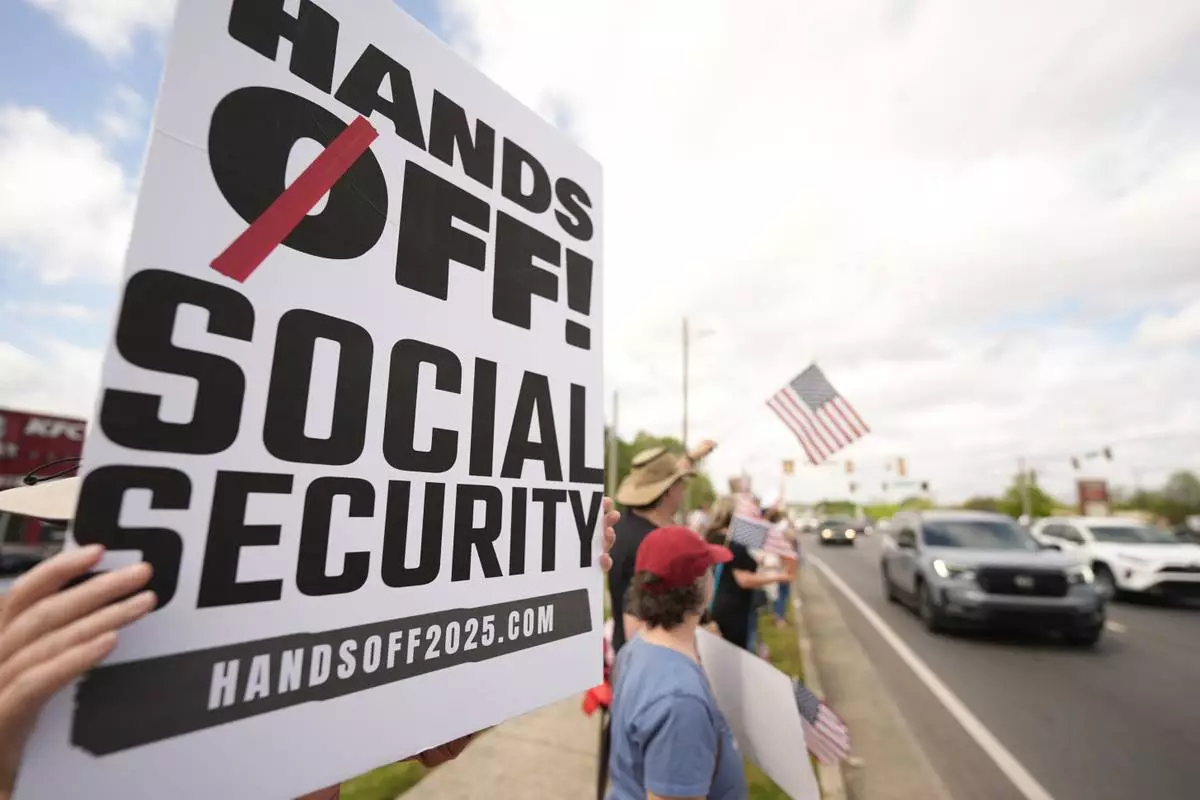
Civil rights demonstrators hold signs and speak to passing vehicles, Saturday, April 5, 2025, in Rome, Ga. (AP Photo/Mike Stewart)

A man in a vehicle cheers as civil rights demonstrators hold signs and speak to passing vehicles, Saturday, April 5, 2025, in Rome, Ga. (AP Photo/Mike Stewart)
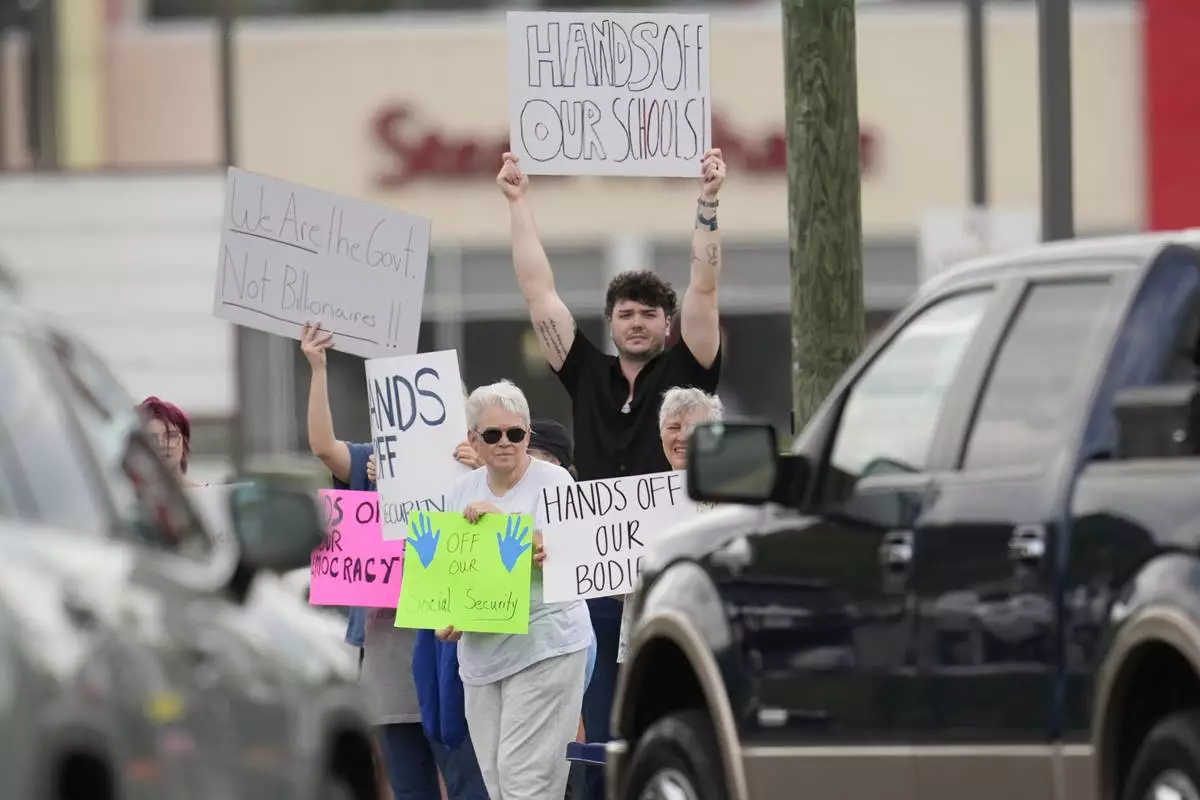
Civil rights demonstrators hold signs and speak to passing vehicles, Saturday, April 5, 2025, in Rome, Ga. (AP Photo/Mike Stewart)
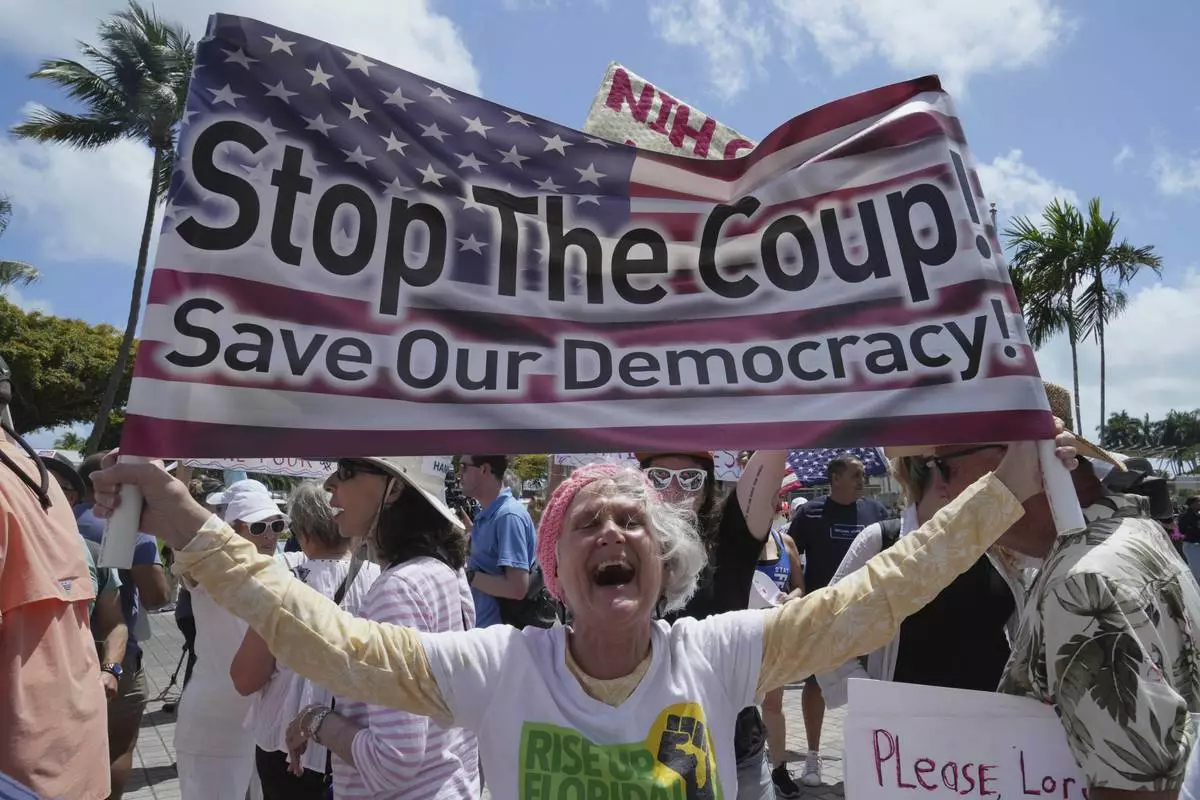
Protesters carry signs and chant slogans against the policies of President Donald Trump and Elon Musk Saturday, April 5, 2025, in Miami. (AP Photo/Marta Lavandier)
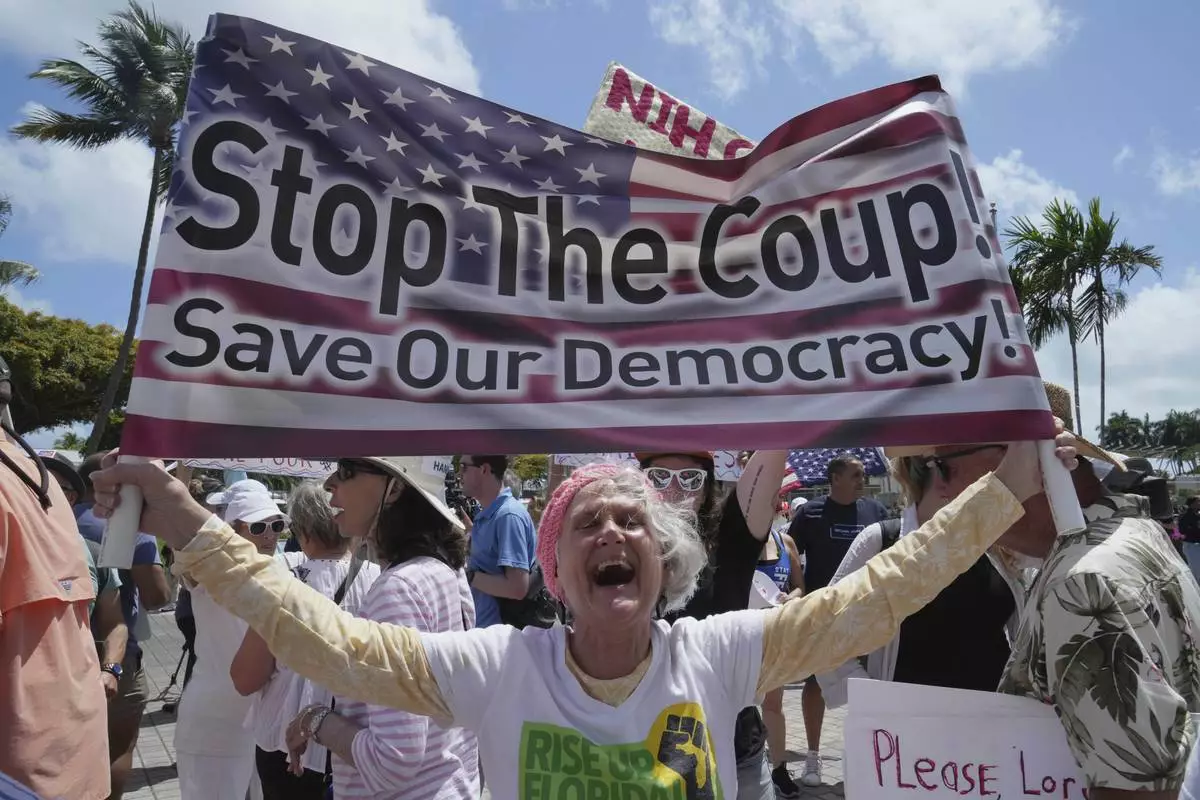
Protesters carry signs and chant slogans against the policies of President Donald Trump and Elon Musk Saturday, April 5, 2025, in Miami. (AP Photo/Marta Lavandier)
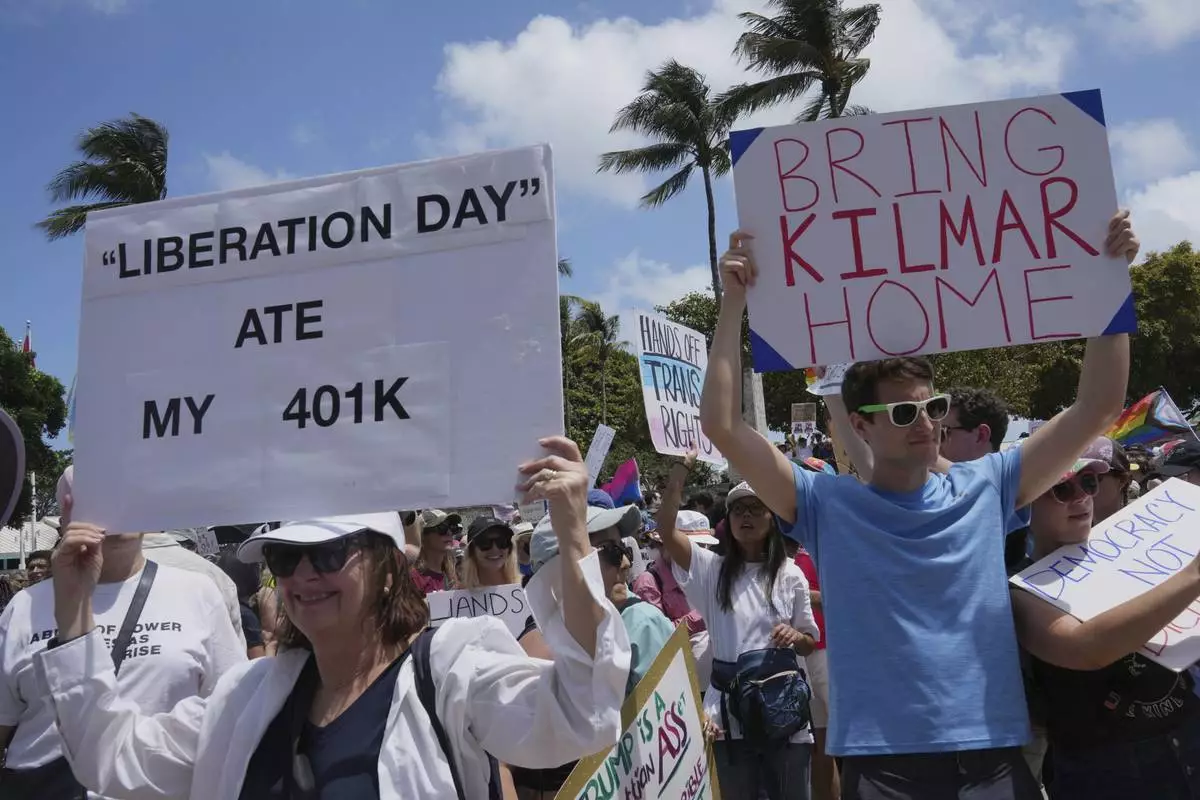
Protesters carry signs and chant slogans against the policies of President Donald Trump and Elon Musk Saturday, April 5, 2025, in Miami. (AP Photo/Marta Lavandier)
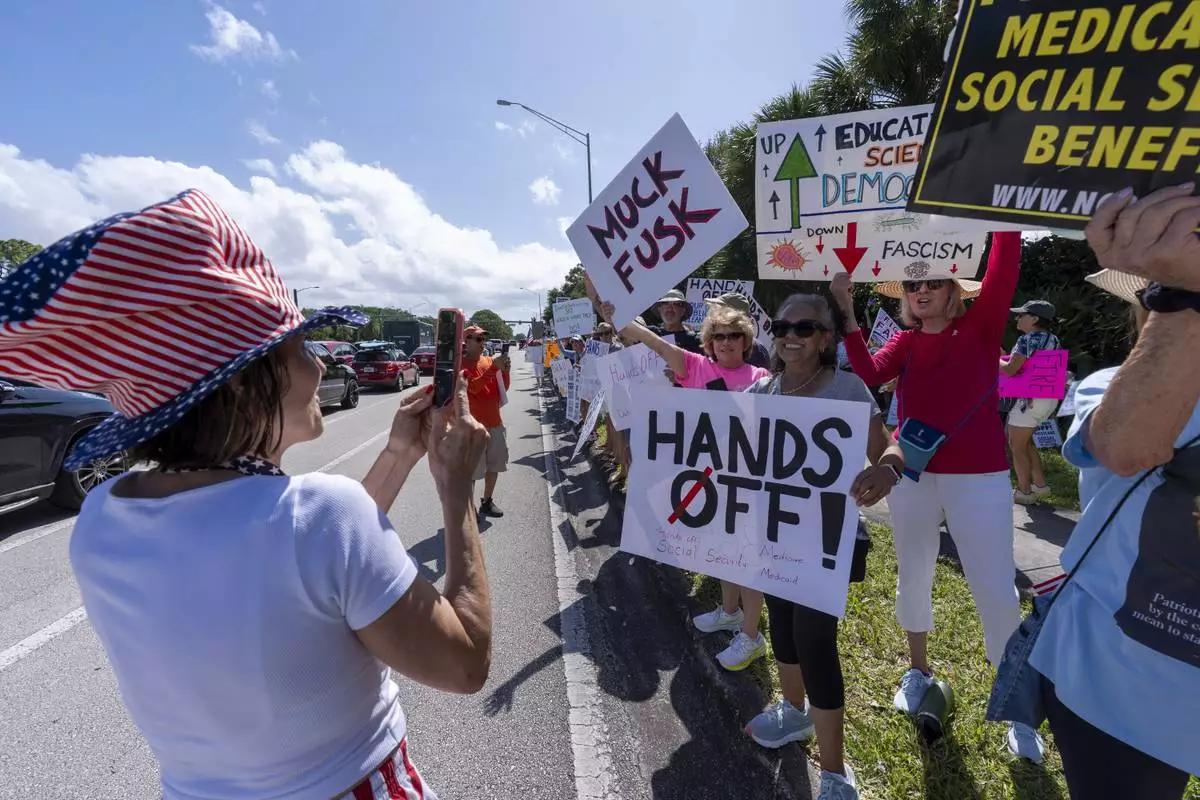
Activists protest President Donald Trump, who was a few miles away at his Trump National Golf Club, during a "Hands Off!" demonstration Saturday, April 5, 2025, in Palm Beach Gardens, Fla. (AP Photo/Alex Brandon)
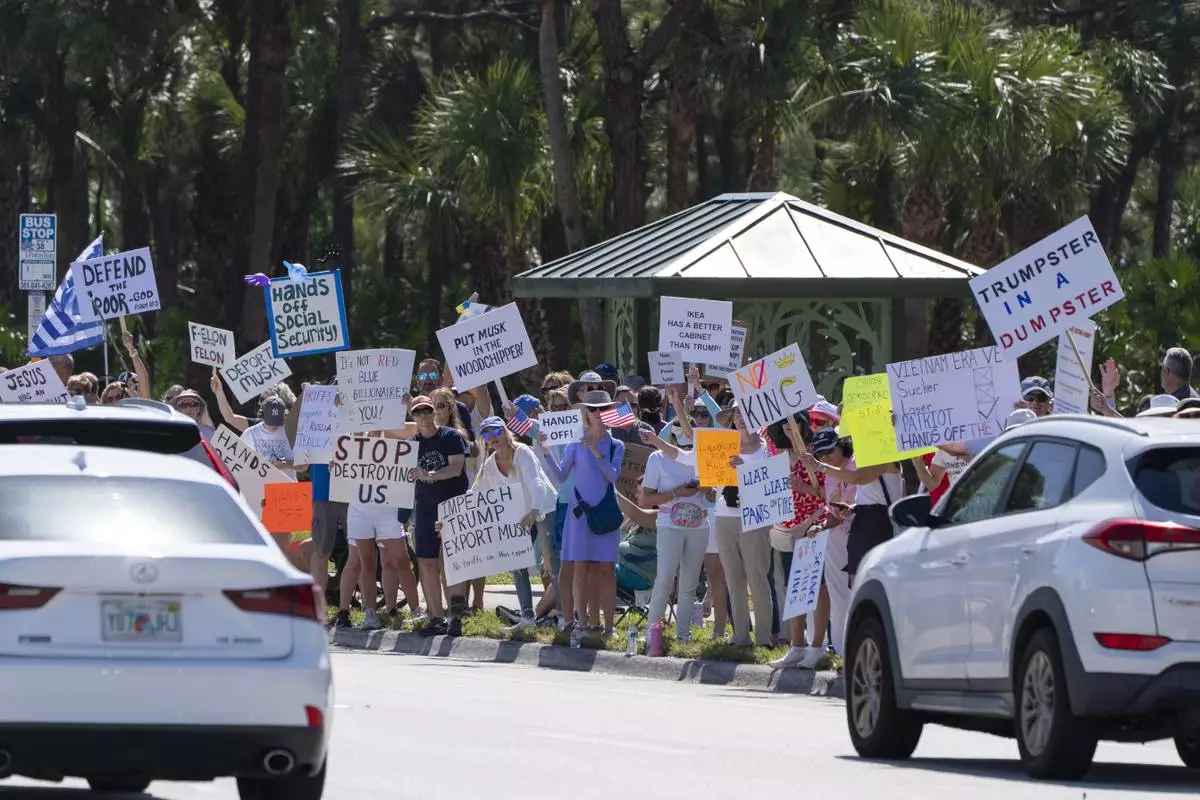
Activists protest President Donald Trump, who was a few miles away at his Trump National Golf Club, during a "Hands Off!" demonstration Saturday, April 5, 2025, in Palm Beach Gardens, Fla. (AP Photo/Alex Brandon)
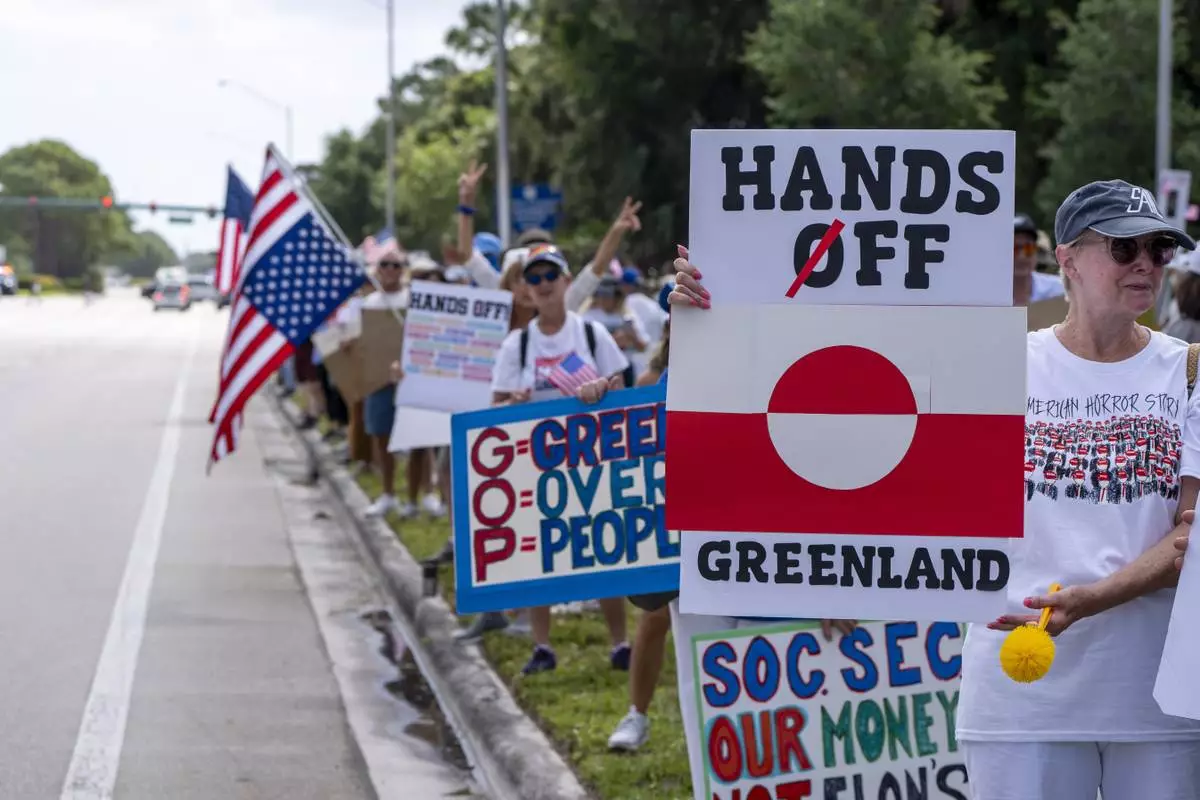
Activists protest President Donald Trump, who was a few miles away at his Trump National Golf Club, during a "Hands Off!" demonstration Saturday, April 5, 2025, in Palm Beach Gardens, Fla. (AP Photo/Alex Brandon)
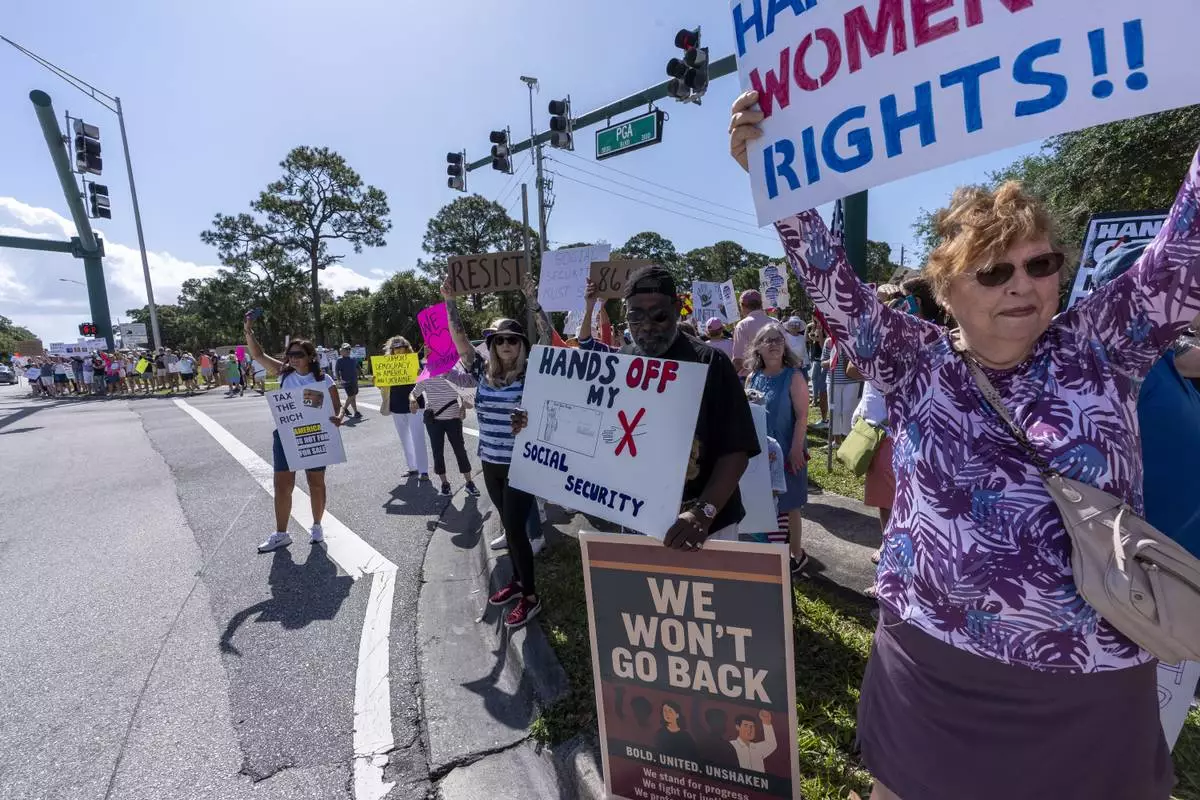
Activists protest President Donald Trump, who was a few miles away at his Trump National Golf Club, during a "Hands Off!" demonstration Saturday, April 5, 2025, in Palm Beach Gardens, Fla. (AP Photo/Alex Brandon)
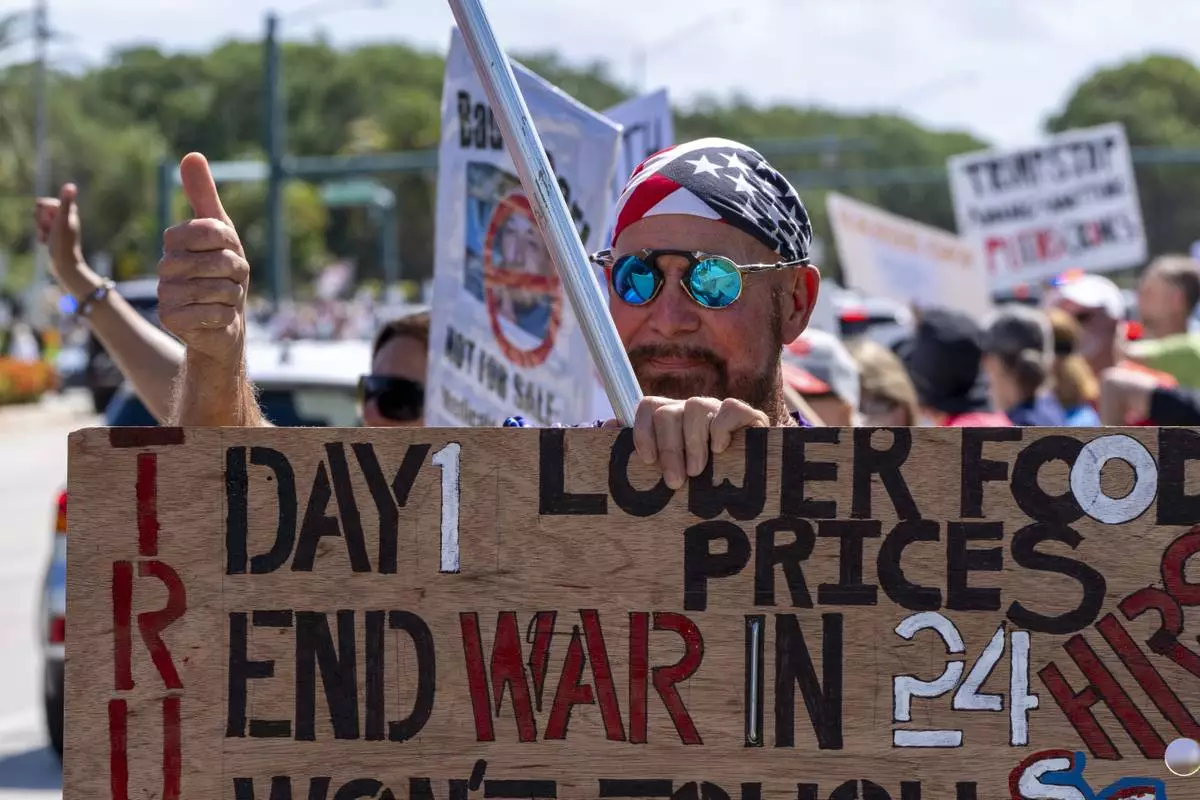
Archer Moran, from Port St. Lucie, Fla., protests President Donald Trump, who was a few miles away at his Trump National Golf Club, during a "Hands Off!" demonstration Saturday, April 5, 2025, in Palm Beach Gardens, Fla. (AP Photo/Alex Brandon)
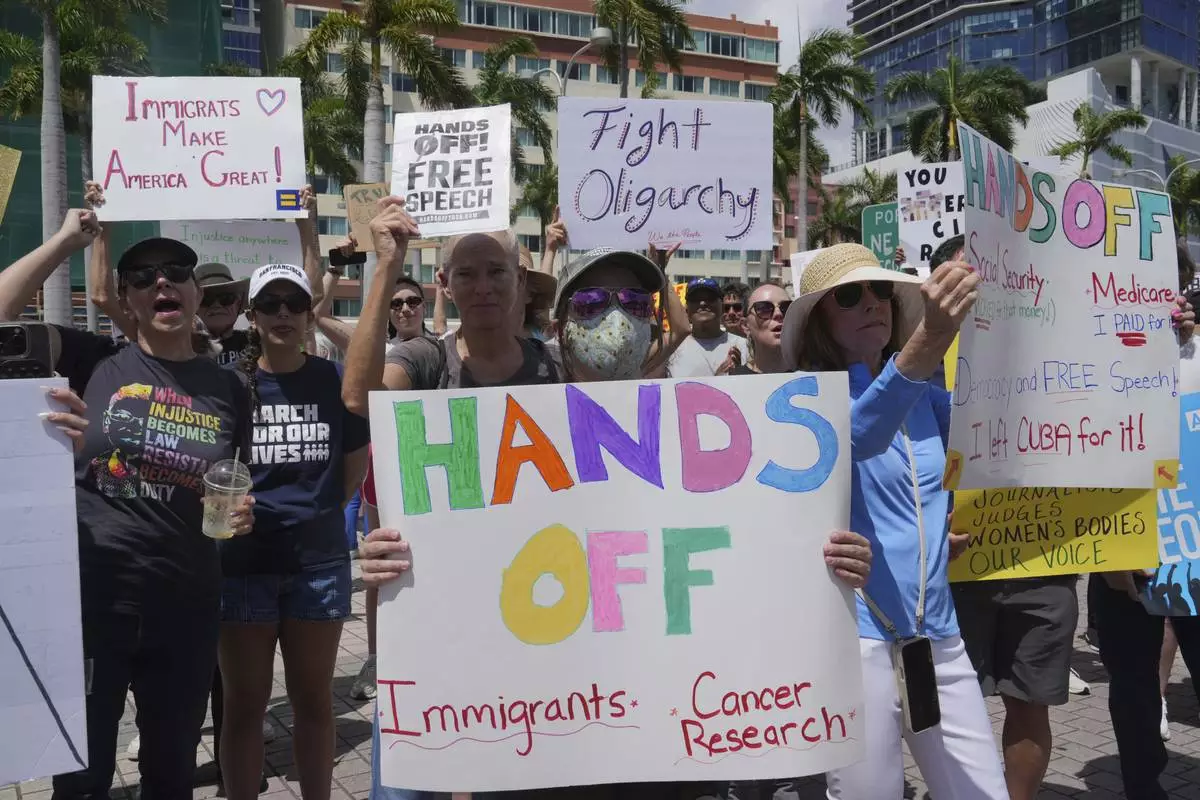
Protesters carry signs and chant slogans against the policies of President Donald Trump and Elon Musk Saturday, April 5, 2025, in Miami. (AP Photo/Marta Lavandier)
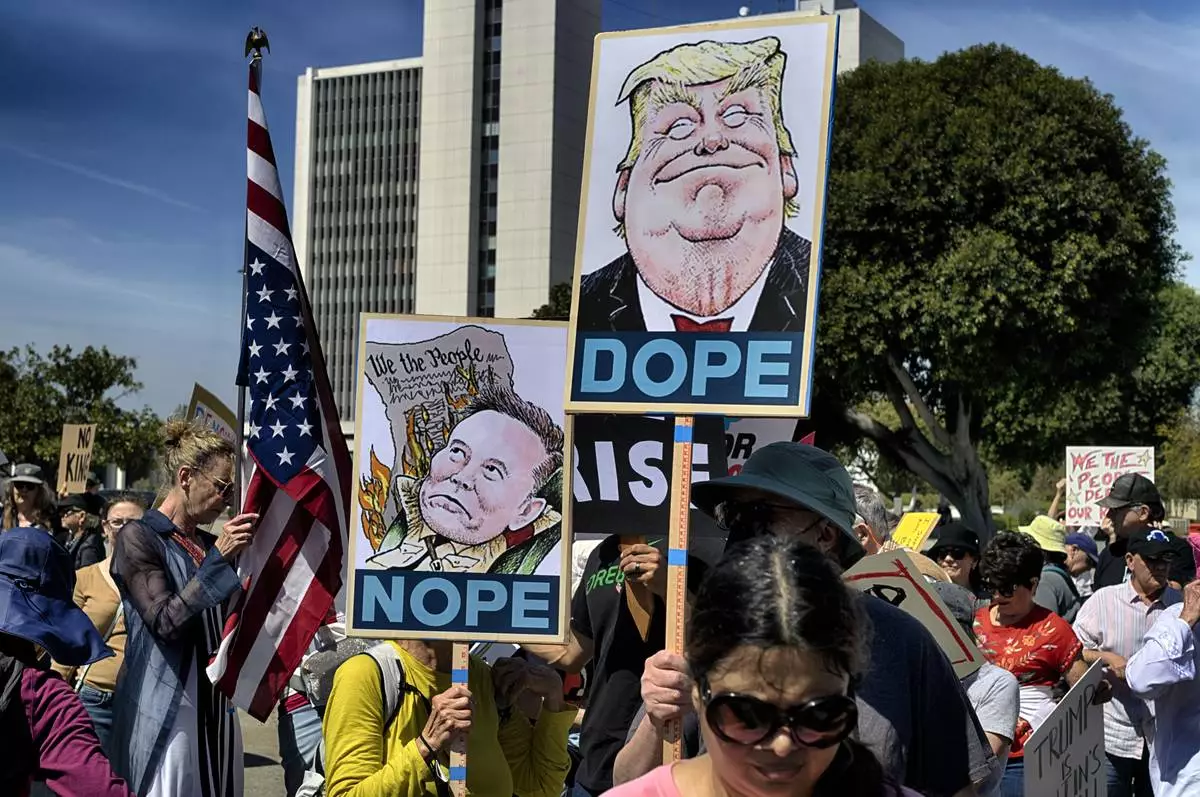
FILE - Protesters carry signs and chant slogans in protest to the policies of President Donald Trump and Elon Musk across from the Federal Building in the Westwood section of Los Angeles, Saturday, March 22, 2025. (AP Photo/Richard Vogel, File)

































